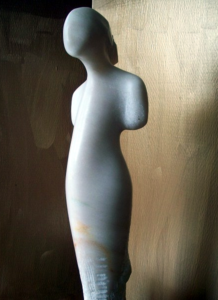

This is a fascinating article by the developer of the PSTIM device, an auricular vagal stim device. They used auricular stim on a patient with cervical dystonia at night. Her HRV, pain, and muscle tone all improved. Granted it took many months. I’ve been looking auricular stimulation in the clinic in conjunction with HRV, and it sometimes increases parasympathetic and sometimes does the opposite.
Kampusch_et_al-2015-Artificial_Organs ear stim for cervical dystonia
Modulation of Muscle Tone and Sympathovagal Balance in Cervical Dystonia Using Percutaneous Stimulation of the Auricular Vagus Nerve.
Kampusch S, Kaniusas E, Széles JC.
Artif Organs. 2015 Oct;39(10):E202-12.
Modulation of Muscle Tone and Sympathovagal Balance in Cervical Dystonia Using Percutaneous Stimulation of the Auricular Vagus Nerve.
Kampusch S1, Kaniusas E1, Széles JC2.
Author information
Abstract
Primary cervical dystonia is characterized by abnormal, involuntary, and sustained contractions of cervical muscles. Current ways of treatment focus on alleviating symptomatic muscle activity. Besides pharmacological treatment, in severe cases patients may receive neuromodulative intervention such as deep brain stimulation. However, these (highly invasive) methods have some major drawbacks. For the first time, percutaneous auricular vagus nerve stimulation (pVNS) was applied in a single case of primary cervical dystonia. Auricular vagus nerve stimulation was already shown to modulate the (autonomous) sympathovagal balance of the body and proved to be an effective treatment in acute and chronic pain, epilepsy, as well as major depression. pVNS effects on cervical dystonia may be hypothesized to rely upon: (i) the alteration of sensory input to the brain, which affects structures involved in the genesis of motoric and nonmotoric dystonic symptoms; and (ii) the alteration of the sympathovagal balance with a sustained impact on involuntary movement control, pain, quality of sleep, and general well-being. The presented data provide experimental evidence that pVNS may be a new alternative and minimally invasive treatment in primary cervical dystonia. One female patient (age 50 years) suffering from therapy refractory cervical dystonia was treated with pVNS over 20 months. Significant improvement in muscle pain, dystonic symptoms, and autonomic regulation as well as a subjective improvement in motility, sleep, and mood were achieved. A subjective improvement in pain recorded by visual analog scale ratings (0-10) was observed from 5.42 to 3.92 (medians). Muscle tone of the mainly affected left and right trapezius muscle in supine position was favorably reduced by about 96%. Significant reduction of muscle tone was also achieved in sitting and standing positions of the patient. Habituation to stimulation leading to reduced stimulation efficiency was observed and counteracted by varying stimulation patterns. Experimental evidence is provided for significantly varied sympathovagal modulation in response to pVNS during sleep, assessed via heart rate variability (HRV). Time domain measures like the root mean square of successive normal to normal heart beat intervals, representing parasympathetic (vagal) activity, increased from 37.8 to 67.6 ms (medians). Spectral domain measures of HRV also show a shift to a more pronounced parasympathetic activity.

